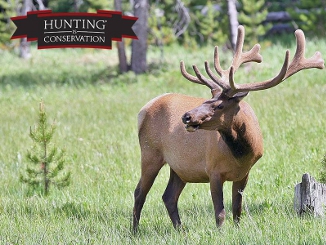 It’s not that far off, and elk enthusiasts everywhere are eagerly expecting a successful season. That success may well depend on your calling skills, and whether you’re a veteran looking to get better or a rank amateur anxious to learn the basics, there are a few things you should consider.
It’s not that far off, and elk enthusiasts everywhere are eagerly expecting a successful season. That success may well depend on your calling skills, and whether you’re a veteran looking to get better or a rank amateur anxious to learn the basics, there are a few things you should consider.
In addition to being a self-described elk nut, bowhunter, guide, naturalist and call maker, Joel Turner, 33, of Eatonville, Washington, is also reigning and two-time champion of the Rocky Mountain Elk Foundation/Leupold World Elk Calling Championships.
He’s equally as skilled at impressing the real judges, wild elk, and has spent the past several years developing an elk calling philosophy and hunting system that he’s distilled to five important points.
CALL TO AN INSTINCT, NOT AN ATTITUDE
“Most often, when challenged by rival, a bull’s first instinct is to retreat. It’s OK to bugle to locate elk from a distance, but afterward, rely on calls that trigger their breeding, rather than their escape, instincts.”

MIMIC A BREEDING SCENE
All mammals are drawn to the sounds of breeding. To mimic breeding elk learn to make four specific calls:
1. Estrus cow call, a long, whining cow call
2. Estrus cow scream, a loud mew made through sputtering lips
3. Tending bull bugle, a soft moan made through a tube
4. Glunking, the sharp hiccoughing sound of a bull.
ANTICIPATE THE HANG-UP SPOT
“An approaching bull will nearly always stop as soon as it can see your calling location. Don’t call unless your setup, in relation to this hang-up spot, is correct” – within about 20 yards, and such that you can draw a bow unseen.
WAIT FOR THE PARADE
“Eight out of 10 times, when a bull arrives at the hang-up spot, he’ll spend a few seconds looking for the cow. If he doesn’t see it, he’ll parade a few steps to one side and then the other. Still no cow, he’s outa here. This parading instinct is your chance to stop the bull when it presents a clear, broadside shot. Give a loud cow call to stop the bull—and be ready to release your arrow.”
MEASURING YOUR BREATHING
“It’s important to keep your mind in logic mode. Control your pulse by controlling your breathing. Breathe in through your nose while counting to four (about 2.5 seconds), hold it for a four-count, then exhale through your mouth while counting to four. Repeat until you feel yourself calming down. Now you’re ready to make your next call.”
By Bob Humphrey
Content provided courtesy of the Rocky Mountain Elk Foundation.
